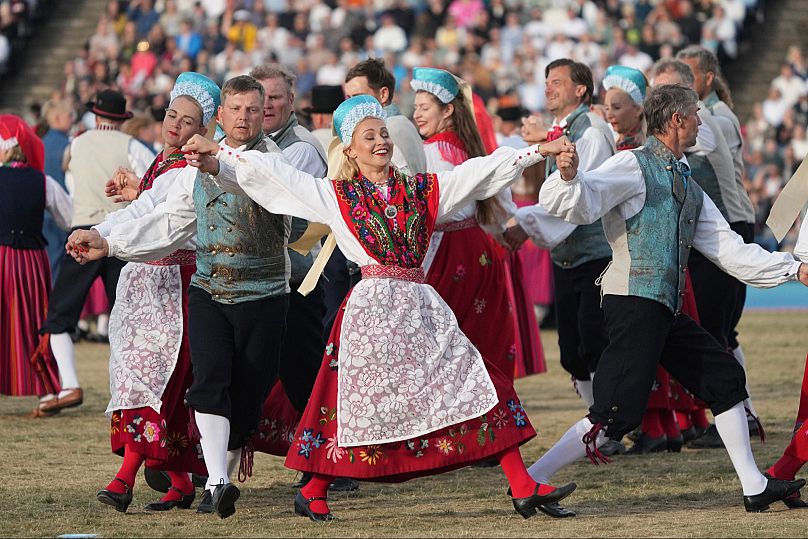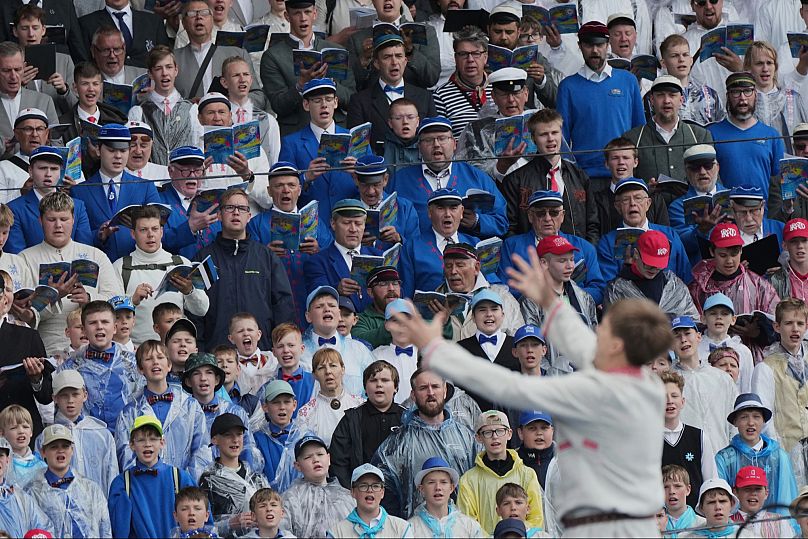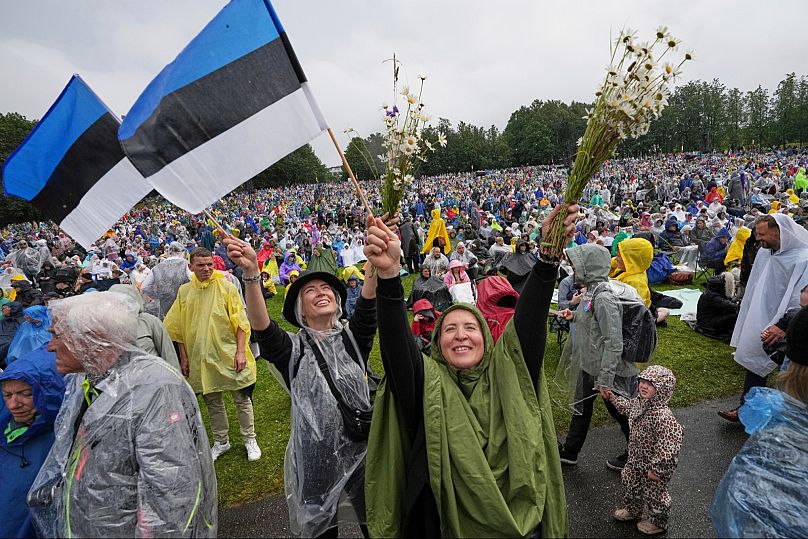Among the numerous music festivals spread across Europe each year in Europe, there are few which unite and spark an entire country’s imagination like Estonia’s Song and Dance Celebration.
Perhaps, it’s because the four-day gathering is only held once roughly every five years, a tradition dating back to 19th century to honour Estonian cultural heritage. Nowadays, it’s heralded as the 1980s event that inspired the defiant Singing Revolution, helping Estonia and other Baltic states break from from Soviet occupation.
The Song Festival Grounds, a massive outdoor venue in the Estonian capital Tallinn, was filled with spectators Saturday evening despite an enormous rainstorm, and packed out again on Sunday, with even more people attending.
This year, tickets to the main event – a seven-hour concert on Sunday featuring choirs, – sold out weeks in advance.
Kinship
National costumes, folk songs and patriotic anthems can be seen and heard throughout the celebration as both participants and spectators of all ages seem to burst with pride and joy, united in song and dance.
The theme of this edition was “Iseoma” or Kinship and that was demonstrated through traditionally sung patriotic anthems as well as a mix of folk songs sung in various dialects and regional languages. There were also new pieces written especially for the occasion.
The main concert on Sunday night culminated with a song called ‘My Fatherland is My Love’ – a patriotic tune Estonians spontaneously sang at the 1960 festival in protest against the Soviet regime. This anthem was the closing song of song celebrations since 1965, and many described it as the highest emotional point of the event.
This year, a choir of over 19,000 singers performed it, with the spectators singing along and waving Estonian flags. A few other songs followed, with patriotic chants in between, and after the concert was over, the audience spontaneously erupted in more singing.
Rasmus Puur, a conductor at the song festival and assistant to the artistic director, ascribes the spike in popularity to Estonians longing for a sense of unity in the wake of the global turmoil, especially Russia’s war in Ukraine.
“We want to feel as one today more than six years ago (when the celebration was last held), and we want to feel that we are part of Estonia,” Puur told The Associated Press on Friday.
Soviet occupation
The tradition to hold massive first song-only, then song and dance festivals dates back to the time when Estonia was part of the Russian Empire.
The first song celebration was held in 1869 in the southern city of Tartu. It heralded a period of national awakening for Estonians, when Estonian-language press, theater and other things emerged, says Elo-Hanna Seljamaa, associate professor at the University of Tartu.
The festivals continued throughout a period of Estonia’s independence between the two world wars and then during the nearly 50 years of Soviet occupation.
The Soviet rulers were into “mass spectacles of all kinds, so in a way it was very logical for the Soviet regime to tap into this tradition and to try to co-opt it,” Seljamaa said in an interview.
Estonians had to sing Soviet propaganda songs in Russian during that time, but they were also able to sing their own songs in their own language, which was both an act of defiance and an act of therapy for them, she said.
At the same time, the complicated logistics of putting together a mass event like that taught Estonians to organize, Seljamaa said, so when the political climate changed in the 1980s, the protest against the Soviet rule naturally came in the form of coming together and singing.
The unity extended beyond Estonia’s borders. During the Singing Revolution, two million people in Estonia, Latvia and Lithuania joined hands to form a 600-kilometer (370-mile) human chain that protested Soviet occupation of the Baltics with a song.
In 2003, the United Nations’ cultural body, UNESCO, recognized Estonia’s folk song festival and similar events in Latvia and Lithuania for showcasing the “intangible cultural heritage of humanity.”








